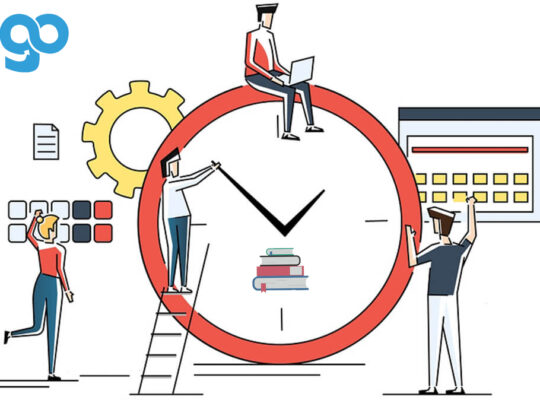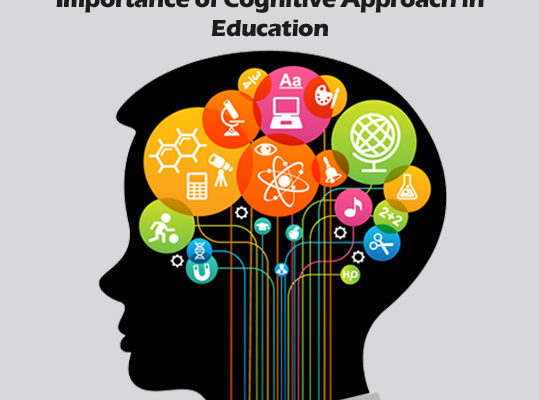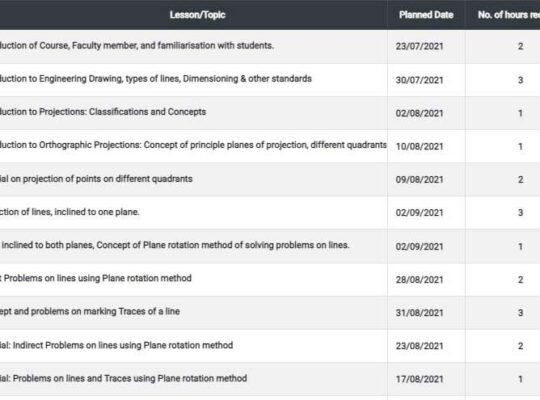Autonomous institutions are regarded as exclusive and prestigious institutions with superior academics. The fact that these have been awarded Autonomous status by the higher education institutions and the UGC indicates that those are top-notch institutions. Most IITs, NITs, IIMs, and other prominent institutions like Manipal and BITS-Pilani and other such institutions throughout India, have created a name of quality only after demanding autonomy.
Prior to being granted autonomous status, the institute must pass a series of assessment as follows:
- Permanent affiliation with an affiliating university
- accreditation from governmental bodies
- predisposition in admission for meritorious students
- a robust research and innovation constituent supported by industry-institute interaction
- an alumni foundation and global standing.
According to the National Assessment and Accreditation Council (NAAC) norms and criteria, each college with a score of 3.51 or higher on the scale from zero to four is deemed autonomous. Institutions with a score of 750 or higher that has been officially validated by the National Accreditation Board (NAB) are qualified for the autonomous rank. A self-contained institution has a number of advantages. An institution acquires entire authority over its future with autonomy. Scholastically, it is permissible to establish new curricula, as well as to examine, reorganize, and remodel current ones. It also can form its own regulatory organizations, such as the academic board, board of research, and finance committee, around an administrative level.
Due to stringent measures, the UGC may not unilaterally provide autonomy to institutions. Rather, the qualified institution should petition to its affiliating institution and the state government where it is established. The first impediment to change is encountered at the college level, where the administration is unwilling to petition for fear of losing state financing. It needs many promises, both individually and via state and local governments, to get the institutions onboard.
The institution affiliating method was created when the number of institutions at a university was low. The university could therefore successfully supervise the colleges’ operations, serve as an examination body, and confer degrees on its account. The structure now has grown cumbersome, making it extremely challenging for a university to meet the diverse demands of separate institutions. Colleges are unable to upgrade or adapt their coursework to meet the needs of their communities. The laws of the university as well as its common system, which control all colleges equally, regardless of their core advantages, limitations, and locations, have seen an influence on the educational growth of individuals colleges.
Institutions which have the ability to provide higher-level courses have not the freedom to use it. The 1964-66 Education Commission stated that academic integrity exercised by educators is a critical necessity for the establishment of our nation’s intellectual atmosphere. Without such an atmosphere, it is hard to accomplish quality in our higher education system. With students, faculty, and administration all working together to improve higher education quality, it really is critical that they assume a primary role. As a result, the Education Commission (1964-66) advocated for academic autonomy, that is essentially a tool for encouraging academic success.
Influencing factors and challenges
- National Institutions
These are prestigious institutes with fierce competition for entrance. These are well-equipped with respect to lab technology, campus facilities, professor quality, student competency, worldwide recognition, competent management, specific functional autonomy, and necessary government aid. Nevertheless, they tend to trail behind their foreign rivals in several ranking systems given the lack of quantity in Quality Research outputs, overburdening of their instructors in course due to significantly increasing number of students resulting from legislative prescriptions for social justice in admittance, and failure to retain adequate Indian faculty given the enormous and continuous brain drain of the top Undergraduate, Postgraduate, and Doctoral students.
They are yet to establish substantial links and partnerships with local community and research institutes in order to resolve issues and concerns impacting local and rural communities, as well as to create new products and services for the better future. They are now offering a crucial element: human capital, for the finest of industry and academics in Western countries.
- State Government Universities
Generally, dishonesty in staff and faculty appointments, faculty dilatory in to be even slightly engaged in research and demonstrating effective instructional enthusiasm, and caste-based affinities in appointments, affiliation, and administration appear to be significant issues in institutions controlled by State Governments. Such difficulties exist regardless of the fact that they provide worthy students who pass different admissions test or other evaluation processes with state-subsidized inexpensive education.
Whilst Central Government is worried regarding operational effectiveness, it is not simple for them to interfere owing to Indian Democracy’s federalist system, in which State Governments have a certain amount of autonomy in all sectors. Yet, in states like Jharkhand, Bihar and Chhattisgarh, below-par environment in certain such institutions, as well as structure, ideologies, and practises, have been undergoing considerable change in recent years, with the understanding of the necessity of excellent mind-sets and practises with honesty in all parts of administration and management.
- State Private Universities
Although they are established in hundreds in last two decades by different State Governments, they suffer from moderate to very serious credibility issues in terms of their operational modalities and implementation effectiveness of processes in meeting expected outcomes. The relative autonomy they enjoy compared to private colleges affiliated to state universities is yet to be fully realised for their long-term growth and utilisation of their potential. Regardless of the fact that several of these institutes have been formed throughout the last twenty years by successive administrations, they struggle from varying severe credibility concerns with respect to their operating mechanisms and the efficacy of procedures in delivering intended objectives. Their greater autonomy in comparison to private institutions linked with state universities is still to be completely fulfilled for long-term development and fulfilment of their capabilities.
A couple of these institutes, such as Manipal and BITS-Pilani, have recently been identified as Institutes of Brilliance due on their years-long history of standardized methods and a drive towards improved outcomes. The worst of such institutes are driven solely by financial motivations for entrepreneurs who joined the education business without a long-term vision or understanding of its complexities, and they are also the ones that struggle to meet current obligations owing to low graduation production, which creates negative feedback.
- Private Colleges affiliated to Universities/Autonomous Private Colleges
Generally speaking, they are yoked to State Govt Universities in all aspects of Curriculum, Admission Criteria and Processes, Assessment and Evaluation Patterns, Exam Conduct and with some oversight in appointment of Faculty. Despite such stipulations some or many of these Colleges are underperforming and unable to attract sustainable enrolment and each year hundreds are being closed by Statutory Councils due to severe concerns of overall quality, staffing strength, graduate employability, or knowledge levels. Autonomous Colleges enjoy a better autonomy than affiliated Colleges and the best of them are given Autonomous Status upon meeting certain criteria.
In principle, these institutions are linked to State Government Universities in terms of curriculum design, configurations and procedures, evaluation and assessment processes, examination conduct, and faculty selection, with certain supervision. Notwithstanding these requirements, several or many of these colleges are failing and are unable to retain long-term participation, and each year, Legislative Councils shut many of them owing to serious concerns about overall performance, personnel strength, employability, or level of knowledge. Autonomous Colleges have more independence than associated Colleges, and those that satisfy specific conditions are granted Autonomous Status.
Possibilities
- Governments are proposing a number of efforts to provide colleges autonomy, allowing for more freedom in academic development and the promotion of academic standards and quality. He believes that in the future years, India’s widespread embrace of autonomy and the abolition of connected systems would alter the educational system into one that is immensely helpful.
- The notion of ‘autonomy’ is a significant break from the present self-governance affiliating structure. The main idea is that a college granted autonomy will have total academic independence in its operations and will be obliged to execute many of the tasks of its parent university in order to do so. Curricula are being revised, innovated, and restructured, new courses are being designed, and an assessment, examination, and evaluation system is being developed and results are being announced. In addition to these responsibilities, an autonomous college will be responsible for a variety of auxiliary duties that were formerly handled by the affiliating institution.
- An institution ought to be able to recognize the community’s ambitions and efficiently transform those objectives into a sustainable academic curriculum. An autonomous college will be able to choose its own curricula and study programmes. The professor will research individual and social needs, and then design a course of study and curriculum based on the feedback received from industry, employers, teaching staff, pupils, and the prevailing state of technology. Due to this, every pupil is well knowledgeable of recent developments in his or her chosen discipline, his capacity for reasoning, and creativity.
- In the digital India, the New Education Policy (NEP) 2020 envisions an innovative pedagogical architecture. This new framework suggested in NEP-2020, on the other hand, is expected to affect the whole nation’s higher education sector, which includes approximately 40,000 colleges, 10,700 stand-alone institutes, and about 1,000 universities. With the exception of preparing for interdisciplinary education, the new category of research-intensive institutions, teaching-intensive academic universities, and autonomous colleges would necessitate considerable changes in the relevant authorities. By 2035, the variety of linked institutions with a university should be limited, and interdisciplinary higher education should be available in every district. However, the effectiveness with which the needed reforms may be implemented raises a number of questions, as the NEP-2020 operation would necessitate the dismantling of the previous structure.
- In past few decades, several HEIs and initiatives have effectively incorporated and utilised a series of technological developments, particularly technology-assisted university courses, non-classroom-based forms of education, and computerized modelling and simulation as educational materials. Several HEIs and programmes now provide integrated learning, wherein classroom time is supplemented by information-based student-faculty contact or peer-to-peer interaction.
Policymakers have a significant information vacuum when evaluating higher education student performance. Graduation rates and time to completion statistics, drop-out percentages, particularly after the first year, and graduation rates, as well as placements and employment figures of graduates in certain areas of study, are the most widely utilized signifiers. Such performance metrics provide a helpful data source for understanding and monitoring higher education performance at the administrative level.
The following is the protocol for the UGC to issue an Autonomy Grant:
- The Finance commission of the Autonomous Institute must meet in the first week of April to assess its use autonomy grant from the past year and to debate the expenditure for the autonomy grant for the next year. The Commission must establish a thorough budget blueprint during this meeting.
- Only things that comply with clause 7 of these rules can be included. Other expenses will not be considered for reimbursement.
- The Finance Commission’s budget will be presented to the Governing Authority for formal confirmation before the 25th of April each year.
- Before or on April 30th, the Commission and the Governing Body must adopt the budget and present it to the UGC’s relevant Regional Centre. If the Governing Body session is not convened before April 30th owing to unforeseen circumstances, the principal, in their capacity as Secretariat of the Governing Body, may present the budget to the UGC’s relevant Regional Office with the Chairman’s consent.
In Conclusion, Autonomous institutions are defying traditional stringent degree criteria by allowing people to enrol into courses that are not part of their regular curriculum. Maharashtra is developing an Independent Institutions’ Alliance, which will enable the students from one autonomous institution to receive full credits for courses taken at another autonomous institution. The alliance will also operate as a conduit for independent institutions to share resources and best practises. In India’s colleges, reform is finally currently underway. This process must be accelerated by the next government.


About the Author: Pooja Bhatia
Pooja is a teacher working for NGOs and a student pursuing management studies. Her interests include education, women empowerment, music and drama. A winner of various B-school competitions including IIM and BITS, Pooja is also a great content strategist. She has article published in the Times of India.
This article has been re-published on Medium





